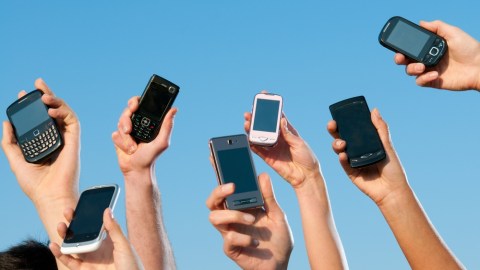Mobile Multiplier or Mobile Divider?

The rapid proliferation of mobile devices is making it possible for not just communities, but also entire nations, to narrow the digital divide between society’s have’s and have-not’s. Not only are these mobile devices more affordable for lower-income individuals, they also are more accessible for individuals in hard-to-reach or under-served areas. In fact, IBM recently predicted the elimination of the global digital divide within the next five years, thanks to a renewed emphasis on building out the infrastructure for mobile networks and expanding the functionality of what we can do with our smart phones – everything from paying bills to monitoring our health to getting real-time information about agricultre. Eliminating the digital divide is supposed to create a “mobile multiplier” for economic growth, but is it actually possible that it could lead to a new type of divide between the mobile have’s and have-not’s?
We’ve already seen evidence of the power of the mobile multiplier in emerging and under-developed markets, where technology gurus routinely talk about the ability of these economies to “leapfrog” the West, thanks to the embrace of mobile devices by every segment of the population. In these emerging markets, the ability to get mobile into the hands of the local population has, indeed, resulted in a mobile multiplier in the form of dramatic improvements in the quality of life. McKinsey estimates that the mobile multiplier in emerging markets may ultimately account for $300 to $400 billion in GDP growth. Other consulting firms point to the role of high mobile device adoption rates in making new types of healthcare initiatives accessible to a greater segment of the population. In places like India and Africa, efforts to eliminate the digital divide have also led to everything from improvements in agriculture to massively disruptive changes in mobile payments and banking.
The good news is that, currently, all signs point to a similar type of multiplier within the U.S. Not only are overall mobile penetration rates within the U.S. on the rise, it is exactly the lower-income and minority segments of the population that are embracing mobile in greatest numbers. Young people making less than $30,000 per year are among the fastest-growing segments of mobile Internet use. Moreover, the latest Pew Internet numbers show that African-Americans and Hispanics are not only more likely to use mobile phones than whites, they are also more likely to use them for a wider range of activities. This would all seem to hint at a rapid closing of the digital divide within the U.S., right?
The bad news is that not all mobile usage is created equal. Technology gurus are already starting to question whether Internet usage on mobile devices is comparable to Internet usage on desktop and laptop devices. The consensus appears to be that people are more inclined to use traditional Internet usage for gaining knowledge and accessing information, while people are more inclinded to use mobile Internet-connected devices to communicate with others. According to a study conducted by the Soros Open Society Foundations, there were also gaps according to gender and education levels, with males more likely than females to be users of mobile devices, and well-educated individuals more likely than poorly-educated individuals to be regular mobile Internet users. In an age where information and knowledge are paramount, people who use their mobile devices solely for communication may get left behind.
“Mobile-first” is one of those corporate buzzwords that people are using these days to describe their strategic focus on creating and designing user experiences around mobile devices. There’s no doubt that not just corporations, but also entire communities and nations, can use exactly such a mobile-first strategy to erase the gaps between the have’s and have-not’s. As McKinsey pointed out back in 2009, tweaks to the regulatory regime and pricing of a nation’s moble networks can have a significant follow-on impact on everything from adoption rates to usage patterns. As a result, we need to be careful that in eliminating one type of digital divide, we are not unknowingly creating another type of digital divide, this one created for the mobile 1% capable of paying for more functionality, more information and faster speeds than the other 99%.
Image: Happy People Showing Their Modern Mobile Phones /Shutterstock





